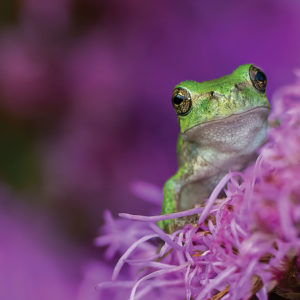A majestic presence among Canada’s rivers
Often seen waltzing through the rivers and streams of North America, the Great Blue Heron is a majestic sight. Standing at around one-meter-tall the bird appears to be something one would expect to see from the Jurassic era. Though they are quite the common sight around any forested river, there are many aspects of these impressive birds that many people don’t know.
Habitat
Though they can most often be seen hunting in rivers, the Great Blue Heron is very dependent on forest for locations to nest. They will build their nests in trees, bushes or even in hidden areas on the ground.
Hunting
The patient hunter will wade out into the water — driving their prey before them and then stand perfectly still. When an opportunity presents itself, the heron will extend its “S” shaped neck and snatch its prey, swallowing it in one gulp. Great Blue Herons hunt a variety of water dwelling creatures including, but not limited to, fish, small amphibians and insects.
Behaviour and Breeding
Great Blue Herons are often solitary creatures, only forming in large groups during mating season. Mating season is the perfect time to examine the extravagant courting rituals performed by the birds including “twig sharing”, the raising of plumes and clapping of bills. Mating colonies can range from a few dozen mating pairs up to hundreds of pairs of herons.
When not in mating colonies, the Herons are extremely defensive of their respected feeding territories and will defend them with a dramatic display. This display includes outstretched wings and their head raised towards the sky.
Conservation and Awareness
In the US, the Great Blue Heron population has been increasing gradually since 1966. However in Canada, the subspecies along the coast of British Columbia has been listed as Special Concern. The destruction of wetlands and the pollution of rivers can cause a great deal of harm to the herons. The destruction of wetlands disrupts breeding for the mating season and also impacts their ability to hunt. Though not all heron subspecies are in direct danger right now, the continued loss of habitat could prove to be detrimental to herons in the future. Another major threat is reduced water quality. Polluting the waterways with contaminants can have multiple health impacts on the herons as well as their food sources.
Though Great Blue Herons are quite common in Canada, there are many aspects that make them unique. It is the hope that as people understand these birds, they will continue to appreciate their beauty and majesty as the largest heron in Canada.



